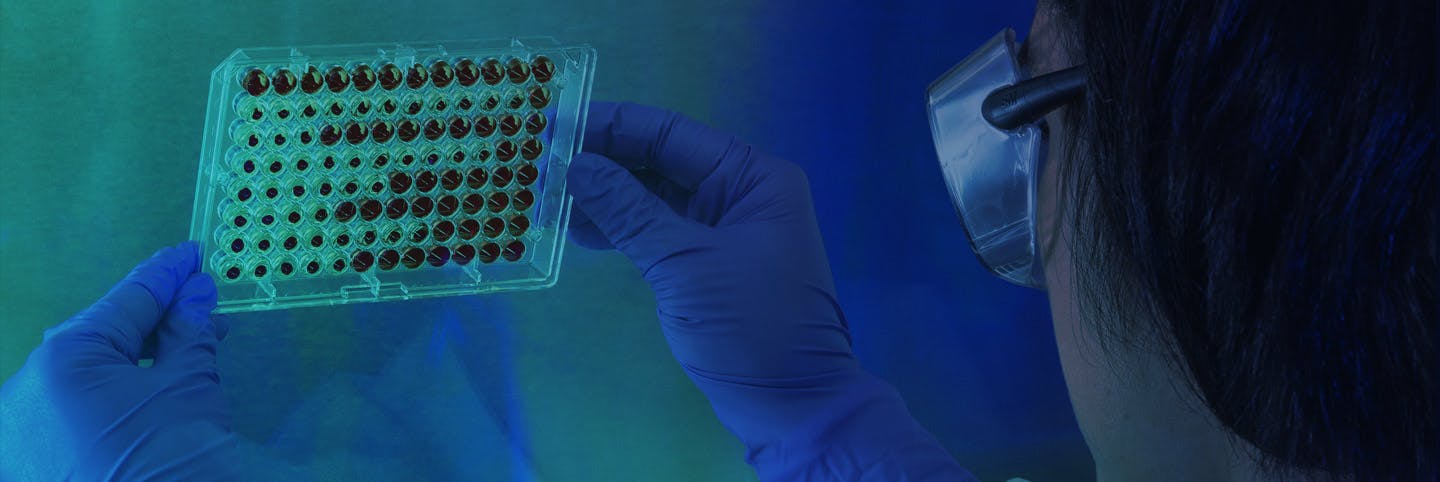AI-supported Target identification for Systemic Lupus Erythematosus.
Lupus is a multi-systemic autoimmune disease affecting approximately 1.5 million Americans and at least five million people worldwide. The majority of these cases, about 70%, are systemic lupus erythematosus (SLE) (1).

- Categories
- Target Selection
Introduction
Lupus is a multi-systemic autoimmune disease affecting approximately 1.5 million Americans and at least five million people worldwide. The majority of these cases, about 70%, are systemic lupus erythematosus (SLE) (1). Currently there is no cure for SLE, and available treatments aim to improve the control of the disease and delay its progression. As such, it is a considerable burden upon patients, their carers and the health services that provide care for them.
In recent years, few significant advances have been made in the treatment landscape for SLE. Novel therapies have focused on the development of biological substances that target B-cells, type I interferon inhibitors and interleukin blockers (2). To date, there is only one biological agent licensed for SLE treatment and therefore, there is great need for the identification of new potential targets for the development of effective therapeutic interventions for this condition (3).
Causaly helps researchers get an overview of the existing and emerging potential therapeutic targets by machine reading the available literature.
Genes/proteins involved in SLE pathophysiology
Within a few seconds Causaly machine reads 76,000 SLE papers and surfaces a total of 2,200 proteins and genes associated with the pathophysiological mechanisms of SLE. Results are displayed in an interactive graphical view allowing users to easily explore the surfaced relationships (Figure 1).

At the top of the list, molecules most extensively studied in the literature are prioritized. Indeed different cytokines, interferon type I, TNF protein and BAFF are well known as potential therapeutic targets for SLE (Figure 2).
By clicking each target, researchers have instant access to all previously published evidence for the target-disease relationship.

Emerging targets associated with SLE
Currently, the majority of new targets still emerge from biological discoveries first appearing in scientific literature (4). For experts in target discovery it is essential to keep up to date with the increasing amount of published data since early recognition of a target opportunity can provide a competitive advantage.
Causaly enables researchers to overcome this challenge and explore emerging relationships with a click of a button. Using its internal scoring system, Causaly can prioritize the most important, yet niche, relationships allowing researchers to discover the “hidden gems”. In the illustration below, MIR326 appears at the top of the list based on the language used by the authors to describe this relationship, despite the limited amount of evidence available (Figure 3). Comparable insights gathered from a traditional literature search would take days or even weeks to complete, as researchers have to screen and analyse the vast amounts of publications.

Finally, users can see all the evidence in a timeline sorted by date of first publication (Figure 4). This enables researchers to discover the most recent potential therapeutic targets regarding SLE and get the latest insights in the field.

Target-centric analysis and druggability
However, the amount of publications researchers need to navigate is not the only challenge. It has become clear that focusing on a potential target alone can be incomplete. Questions regarding target mechanism and druggability need to be addressed.
Causaly allows users to investigate whether potential targets are involved in disorders with comparable underlying pathophysiological mechanisms to elucidate potential mechanisms of action. It also helps researchers identify pharmacological substances in the literature reported to target these indications to provide valuable insights for subsequent evaluation by target identification experts.
In the present case, PCSK9 gene was previously identified as a potential target for SLE treatment using the temporal analysis function and was further investigated for its association with other autoimmune diseases (Figure 5) as well as its druggability (Figure 6).


Summary
In the field of SLE, with over 2,000 scientific papers published in 2020 alone, it is important for target identification experts to stay on top of recent advancements to develop novel therapeutics.
Causaly can facilitate this process and enable researchers to identify potential targets as well as investigate the underlying mechanism of action and druggability in an efficient and timely manner.
References
- Lupus Foundation of America. Lupus facts and statistics
- Samotij D, Reich A. Biologics in the Treatment of Lupus Erythematosus: A Critical Literature Review. Biomed Res Int. 2019;2019:8142368. Published 2019 Jul 18. doi:10.1155/2019/8142368 Biologics in the Treatment of Lupus Erythematosus: A Critical Literature Review
- Lupus Foundation of America. 2019: Unprecedented Year in Lupus Drug Development
- Pankaj Agarwal, David B. Searls, Literature mining in support of drug discovery, Briefings in Bioinformatics, Volume 9, Issue 6, November 2008, Pages 479–492, Literature mining in support of drug discovery | Briefings in Bioinformatics
Request access for your organisation
If you are currently working on new target identification and would like access for your organisation, visit www.causaly.com or email contact@causaly.com to request a demo or trial.
More on Target Selection
